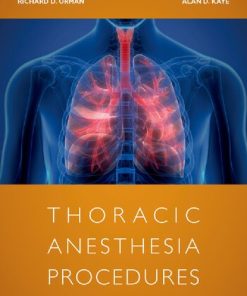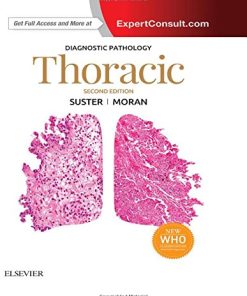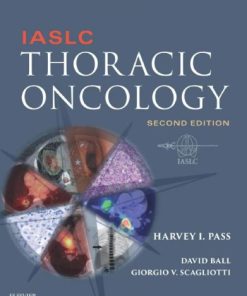IASLC thoracic oncology 2nd Edition by David Ball, Harvey Pass, Giorgio Scagliotti 0323527833 9780323527835
$50.00 Original price was: $50.00.$25.00Current price is: $25.00.
IASLC thoracic oncology 2nd Edition by David Ball, Harvey Pass, Giorgio Scagliotti – Ebook PDF Instant Download/DeliveryISBN: 0323527833 9780323527835
Full download IASLC thoracic oncology 2nd Edition after payment.

Product details:
ISBN-10 : 0323527833
ISBN-13 : 9780323527835
Author : David Ball, Harvey Pass, Giorgio Scagliotti
Global experts, in conjunction with the International Association for the Study of Lung Cancer, bring you up to date with today’s best approaches to lung cancer diagnosis, treatment, and follow-up. IASLC Thoracic Oncology, 2nd Edition, keeps you abreast of the entire scope of this fast-changing field, from epidemiology to diagnosis to treatment to advocacy. Written in a straightforward, practical style for the busy clinician, this comprehensive, multidisciplinary title is a must-have for anyone involved in the care of patients with lung cancer and other thoracic malignancies.
IASLC thoracic oncology 2nd Table of contents:
Section I. Lung Cancer Control and Epidemiology
1. Classic Epidemiology of Lung Cancer
Descriptive Epidemiology
Risk Factors
Conclusion
2. Tobacco Control and Primary Prevention
Historical Context of the Tobacco Epidemic
21st Century Tobacco-Control Measures
Conclusion
3. Assessing and Treating Tobacco Use in Lung Cancer Care
Why Lung Cancer Specialists Should Help Their Patients Stop Tobacco Use
Factors Associated With Persistent Smoking Among Patients With Lung Cancer
Assessing Tobacco Use and Integrating Evidence-Based Tobacco Treatment is an Indicator of High-Quality Oncology Care
Delivery of Evidence-Based Tobacco Dependence Treatment in Cancer Settings is Currently Suboptimal
Treatment of Tobacco Dependence in Lung Cancer Care
Special Considerations in Treating Tobacco Dependence in Patients With Cancer
Future Directions
Conclusion
4. Lung Cancer in Never-Smokers: A Different Disease
Epidemiology of Nonsmoking-Related Lung Cancer
Known or Suspected Etiologic Factors for Lung Cancer in Never-Smokers
Clinical-Pathologic Features of Lung Cancer in Never-Smokers
The Genetics of Lung Cancer
Molecular Characteristics of Nonsmoking East Asian Individuals With Lung Cancer
Genome-Wide Molecular Changes
Preneoplastic Changes
Dna Methylation
Conclusion
5. Gender-Related Differences in Lung Cancer
Epidemiology
Susceptibility
Genetic Factors
Family History
Viral Factors
Environmental Exposures, Diet, and Preexisting Lung Disease
Steroid Hormones in Lung Cancer
Gender as a Prognostic Factor in Early-Stage Lung Cancer
Prognostic/Predictive Role of Gender in Advanced Disease
Conclusion
6. Genetic Susceptibility to Lung Cancer
Biologic Risk Factors
Evidence for Familial Aggregation of Lung Cancer
High-Risk Syndromes Conferring an Increased Risk of Lung Cancer
Segregaton Analyses of Lung and other Tobacco-Related Cancers
Rare, High-Penetrance Genes: Linkage Analysis of Lung Cancer
Common, Low-Penetrance Genes: Genome-Wide Association Studies
Conclusion
7. Screening for Lung Cancer
Participant Selection
Summary of Randomized Screening Trials
Pulmonary Nodules
Overdiagnosis
Smoking Cessation
Biomarkers
Conclusion
8. Preclinical Biomarkers for the Early Detection of Lung Cancer
Early Detection
Lung Cancer Biomarkers for Early Detection
Conclusion
9. Chemoprevention of Lung Cancer and Management of Early Lung Cancer
Gene Silencing
Susceptibility to Lung Cancer and Balancing of Antagonistic Pathways
Vitamins and Micronutrients
Status of Lung Cancer Screening and its Relationship to Chemoprevention
Screening Interval and Selection of Candidates
Opportunities to Improve LDCT Screening
Improvements in the Approach to Screening and LDCT Imaging
Changes in Nodule Evaluation and Diagnostic Workup
Further Opportunities Associated With LDCT Screening
Chemoprevention Trials
Future Strategies
Conclusion
Section II. Lung Cancer Molecular Carcinogenesis
10. Copy Number Abnormalities and Gene Fusions in Lung Cancer: Present and Developing Technologies
Genetic Instability in Lung Cancer
Amplification as a Mechanism of Oncogenesis
Structural Changes Leading to Oncogenesis by Gene Fusions
Conclusion
11. Mutational Events in Lung Cancer: Present and Developing Technologies
Overview of Genomic Technologies
Applications of Next-Generation Sequencing
Comprehensive Genomic Studies Using NGS in Lung Cancer
Emerging Technologies: Third-Generation Sequencing
Sequencing in Suboptimal Samples
Future Directions
12. Epigenetic Events in Lung Cancer: Chromatin Remodeling and DNA Methylation
Genetic and Epigenetic Interactions
Histone Modifications and their Role in Lung Cancer
Chromatin Remodeling Complexes
DNA Methylation
DNA Hypomethylation in Lung Cancer
Epigenetic Therapy for Lung Cancer
Conclusion
13. Stem Cells and Lung Cancer: In Vitro and In Vivo Studies
Normal Lung
Nonsmall Cell Lung Cancer
Small Cell Lung Cancer
Conclusion
14. Microenvironment and Lung Cancer
Lung Carcinogenesis
The Developing Lung Tumor Microenvironment
Prototypical Cell Types Comprising the Cellular Component of the Developing Lung Tumor Microenvironment
Prototypical Cell-Secreted Products Comprising the Soluble Component of the Developing Lung Tumor Microenvironment
Recent Attempts to Molecularly Define the Field Component of the Lung Tumor Microenvironment
Recent Attempts to Manipulate the Cellular (Immunity) and Soluble (Inflammation) Components of the Tumor Microenvironment for Lung Cancer Chemoprevention and Therapy
Conclusion
15. MicroRNAs as Biomarkers for Lung Cancer
The Importance of Micrornas in Lung Cancer
Future Perspectives
Section III. Immunology
16. Humoral and Cellular Immune Dysregulation and Lung Cancer
Suppression of the Antigen-Presenting Machinery
Tumor-Derived Soluble Factors
Tumor-Infiltrating T Lymphocytes
Myeloid-Derived Suppressor Cells
Cigarette Smoking and Immune Dysfunction
Conclusion
Section IV. Pathology
17. Classic Anatomic Pathology and Lung Cancer
Nonsmall Cell Lung Carcinoma
Neuroendocrine Tumors
Other Unclassified Tumors
Salivary Gland–Type Tumors
Use of Immunohistochemistry for Lung Cancer Diagnosis
Pathology Samples for Molecular Testing
Cytologic Analysis of Lung Cancer
Conclusion
18. Molecular Testing in Lung Cancer
Genetic Abnormalities in Lung Cancer
Assay Platforms in Molecular Testing
Tissue Requirements for Molecular Testing
Sample Availability and Prioritization of Biomarkers for Testing
Currently Recommended Predictive Biomarkers in Lung Cancer
Potential New Molecular Markers for the Future
Conclusion
19. Management of Small Histologic and Cytologic Specimens in the Molecular Era
Core-Needle Biopsy Versus Fine-Needle Aspiration
Rapid ONSITE Evaluation
Managing Small Samples without Rapid ONSITE Evaluation
Optimization and Triage
Cytologic Preparations
Conclusion
Section V. Clinical and Radiologic Presentation of Lung Cancer
20. Clinical Presentation and Prognostic Factors in Lung Cancer
Symptoms and Signs of Local Tumor Growth
Symptoms and Signs of Invasive Local–Regional or Intrathoracic Spread
Symptoms and Signs of Metastatic Spread
Paraneoplastic Syndromes
Clinical and Molecular Prognostication of Lung Cancer
Conclusion
21. Conventional Imaging of Lung Cancer
Radiologic Presentation of Lung Cancer
Solitary Pulmonary Nodule Characterization
Imaging with Chest Radiographs
Imaging with CT
Use of CT in Staging of Lung Cancers
Image-Guided Biopsy
CT Imaging of Response to Therapy
Imaging of Emergent Conditions in Lung Cancer
Imaging with MRI
Use of MRI in Staging of Lung Cancer
MRI of Response to Therapy
Conclusion
22. Positron Emission Tomography Imaging of Lung Cancer
Staging of Lung Cancer
Prognosis
Therapeutic Response
FDG-PET–CT for Radiation Treatment Planning and Adaptive Planning
Conclusion
Section VI. Diagnosis and Staging of Lung Cancer
23. Diagnostic Workup for Suspected Lung Cancer Confined to the Chest
Clinical Features
History
Imaging Features and Diagnostic Accuracy
Diagnostic Approach for Establishing a Definitive Diagnosis and Staging
Conclusion
24. Preoperative and Intraoperative Invasive Staging of the Mediastinum
Lymph Node Anatomy of the Mediastinum and the Iaslc Lymph Node Map
Lymph Node Stations and Choice of Staging Technique
Indications for Invasive Mediastinal Staging
Definitions of Mediastinal Lymph Node Staging
Required Lymph Node Stations for Invasive Staging
Choice of Staging Technique
Invasive/Surgical Staging Techniques
Mediastinal Restaging
Conclusion
25. The Eighth Edition of the Tumor, Node, and Metastasis Classification of Lung Cancer
The International Association for the Study of Lung Cancer Database for the Eighth Edition
Innovations in the T, N, and M Descriptors
Classification of Tumors that do Not Fit in the Descriptors
New Specific Rules for Lung Cancer
Implications for Clinical Practice
Section VII. Surgical Management of Lung Cancer
26. Preoperative Functional Evaluation of the Surgical Candidate
Evaluation of Comorbidity
Estimation of Cardiac Risk
Predicted Postoperative Forced Expiratory Volume in 1 Second
Carbon Monoxide Lung Diffusion Capacity
Video-Assisted Thoracoscopic Surgery
Exercise Testing
Algorithms
Smoking Cessation
Pulmonary Rehabilitation
Conclusion
27. Results of Video-Assisted Techniques for Resection of Lung Cancer
Definitions
Outcomes: Comparison of Vats and Open Lobectomy
Discussion
Conclusion
28. Robotic Surgery: Techniques and Results for Resection of Lung Cancer
Definitions
History of Surgical Robotics
Robotic Lobectomy: Technical Aspects
Outcomes
Conclusion
29. Extent of Surgical Resection for Stage I and II Lung Cancer
Overview of the Evolution of Lung Cancer Surgery
Results of Surgical Resection for Stage I and Ii Lung Cancer
Possibility of Sublobar, Limited Resection for Stage I and II Lung Cancer
Conclusion
30. Extended Resections for Lung Cancer: Chest Wall and Pancoast Tumors
Chest Wall Tumors
Pancoast Tumors
Conclusion
31. Extended Resections for Lung Cancer: Bronchovascular Sleeve Resections
History and Surgical Outcomes of Bronchovascular Sleeve Resection
Healing of the Anastomotic Site After Bronchial Sleeve Resection
Surgical Techniques and Controversies Regarding Bronchial Sleeve Resections
Surgical Techniques and Controversies Regarding Pulmonary Artery Angioplasty
Conclusion
32. Multiple Nodules: Management of Synchronous and Metachronous Lung Cancers
Differentiating MPLCs from Metastatic Disease
Evidence-Based Practice Guidelines
Conclusion
33. Surgical Management of Patients Considered Marginally Resectable
Which Patients are Considered Marginally Resectable?
Role of Sublobar Resection in the Treatment of Nonsmall Cell Lung Cancer
Impact of Sublobar Resection On Lung Function and Morbidity
Video-Assisted Thoracoscopic Surgery
Sublobar Resection Versus Other Local Therapies
Conclusion
Section VIII. Radiotherapeutic Management of Lung Cancer
34. Technical Requirements for Lung Cancer Radiotherapy
Radiotherapy Equipment
Treatment Delivery for Nonsmall Cell Lung Cancer
Motion Management
Quality Assurance for Lung Cancer Radiotherapy
Future Directions in Lung Cancer Radiotherapy
Conclusion
35. Radiobiology of Lung Cancer
Radiobiologic Basis of Conventionally Fractionated Radiotherapy
Alternative Fractionation Schedules and Dose Escalation
Stereotactic Ablative Radiotherapy
Modification of Radiation Response
Biomarkers Predictive of Radiation Response
Conclusion
36. Patient Selection for Radiotherapy
Patient-Related Factors
Tumor-Related Factors
Conclusion
37. Stage I Nonsmall Cell Lung Cancer and Oligometastatic Disease
SABR: Background and Definitions
Clinical Assessment
Technical Overview for Radiation Oncologists
Clinical Results of SABR
SABR for Central Lesions
Follow-Up After SABR
Salvage Therapies
Reproducibility of SABR Results
Alternatives to SABR for Early-Stage NSCLC
Oligometastases from Lung Cancer
Immune Effects of SABR for Oligometastases
Clinical Results of SABR for Oligometastases
Conclusion
38. Ablation Options for Localized Nonsmall Cell Lung Cancer
Mechanism of Action of Ablation Techniques
Technical Factors Influencing Size of the Ablation Zone
Indications for Thermal Ablation
Complications of Thermal Ablation
Reported Outcomes of Thermal Ablation
Treatment Considerations
Conclusion
39. Radiotherapy for Locally Advanced Nonsmall Cell Lung Cancer Including Combined Modality
Radiotherapy Dose and Fractionation
Chemoradiation Therapy
Molecularly Targeted Therapeutic Agents
Locoregional Treatment with Surgery or Radiotherapy
Brain Metastases and Prophylactic Cranial Radiation
Outcome Measurements
Conclusion
40. Radiotherapy in the Management of Small Cell Lung Cancer: Thoracic Radiotherapy, Prophylactic Cranial Irradiation
Timing Question
Fractionation and Dose
Radiation Treatment Volumes
Chemotherapy Regimen Combined with Radiotherapy
Extensive Disease: Thoracic Radiotherapy
Prophylactic Cranial Irradiation
Prophylactic Cranial Irradiation in Extensive Disease
41. Palliative Radiotherapy for Lung Cancer
Palliative Radiotherapy for Thoracic Symptoms
Bone Metastases
Brain Metastases
Palliative Radiotherapy to Other Areas
Conclusion
42. Acute and Late Toxicities of Thoracic Radiotherapy: Pulmonary, Esophagus, and Heart
Pulmonary Toxicity
Radiation Pneumonitis
Esophagus Toxicity
Heart
Conclusion
43. Neurotoxicity Related to Radiotherapy and Chemotherapy for Nonsmall Cell and Small Cell Lung Cancer
Neurotoxicity from Radiotherapy
Prevention of Neurocognitive Complications
Conclusion
Section IX. Chemotherapy and Targeted Agents for Lung Cancer
44. Frontline Systemic Therapy Options in Nonsmall Cell Lung Cancer
Prognostic Factors in Nonsmall Cell Lung Cancer
Treatment of Advanced Nonsmall Cell Lung Cancer
Importance of Histology in the Treatment of NSCLC
Management of Elderly Patients
Management of Patients with a Poor Performance Status
Biomarkers for Selection of Chemotherapy
Combination of Targeted Agents with Platinum-Based Chemotherapy
Antiangiogenic Therapy
Epidermal Growth Factor Blockade in NSCLC
ALK-Rearranged NSCLC
Molecular Characterization of NSCLC
Immunotherapy in NSCLC
Conclusion
45. Systemic Options for Second-Line Therapy and Beyond
History
Second-Line Chemotherapy
Choice of Chemotherapy Agent
Scheduling of Chemotherapy
Third- and Subsequent-Line of Chemotherapy
Second-Line Treatment with Molecularly Targeted Agents
Novel Targets
Anaplastic Lymphoma Kinase
Heat Shock Protein 90 Inhibitors
Immune Checkpoint Inhibitors
Cytotoxic T-Lympocyte Associated Antigen 4
Conclusion
46. Maintenance Chemotherapy for Nonsmall Cell Lung Cancer
Historical Maintenance Trials
Modern Maintenance Trials
Meta-Analyses
Cost-Effectiveness
Patient Selection
Remaining Questions and Future Studies
47. Pharmacogenomics in Lung Cancer: Predictive Biomarkers for Chemotherapy
Tumor-Related Factors
Host-Related Factors
Conclusion
48. New Targets for Therapy in Lung Cancer
Key Signal Transduction Pathways
Therapeutic Targets
Conclusion
49. Management of Toxicities of Targeted Therapies
Dermatologic Side Effects
Gastrointestinal Side Effects of EGFR Inhibitors
Pulmonary Side Effects: Interstitial Lung Disease
Bevacizumab and Ramucirumab Side Effects
Anaplastic Lymphoma Kinase Inhibitor Side Effects
Heat-Shock Protein 90 Inhibitor Side Effects
Braf Inhibitor Side Effects
MEK Inhibitor Side Effects
PD1 and PD-L1 Monoclonal Antibody Side Effects
Ethnic Differences in Side Effects of Targeted Therapy
Conclusion
50. Immunotherapy and Lung Cancer
Immunologic Dysfunction in Patients with Lung Cancer
Supporting Evidence for the Use of Immunotherapy for Lung Cancer
Vaccines
Immune Checkpoint Inhibitors: Agents and Clinical Development
Combination Strategies
Conclusion
51. Adjuvant and Neoadjuvant Chemotherapy for Early-Stage Nonsmall Cell Lung Cancer
Rationale for Adjuvant Therapy
Role of Adjuvant Radiotherapy
Early Studies of Adjuvant Chemotherapy
Large-Scale Studies on Platinum-Based Adjuvant Chemotherapy
Studies of Adjuvant Treatment With Oral UFT
Efficacy of Adjuvant Chemotherapy According to Systematic Reviews, Meta-Analyses, and Cancer Registry Data
Adjuvant Chemotherapy for Older Patients
New Chemotherapy Regimens and Targeted Therapy
Neoadjuvant Chemotherapy
Biomarkers to Individualize Adjuvant Chemotherapy
Conclusion
52. Treatment of Extensive-Stage Small Cell Lung Cancer
First-Line Chemotherapy
First-Line Chemotherapy for Older Patients
First-Line Chemotherapy for Patients With Poor Performance Status
Second-Line Chemotherapy
New Drugs
Conclusion
Section X. Other Thoracic Malignancies
53. Malignant Mesothelioma
Biology of Malignant Pleural Mesothelioma
BAP1
Diagnosis
Staging
Biomarkers
Chemotherapy
Surgery
Immunotherapy for Mesothelioma
Conclusion
54. Mediastinal Tumors
Germ Cell Tumors
Lymphoma
Neurogenic Tumors
Benign Cystic Masses
Substernal Goiter
Parathyroid Adenoma
Leiomyoma
Surgical Approach
Conclusion
55. Neuroendocrine Tumors of the Lung Other Than Small Cell Lung Cancer
Classification
Diagnosis
Molecular Biology
Clinical Characteristics
Staging
Imaging
Therapy
Combined LCNEC
Prognosis
Conclusion
56. Thymic Tumors
Thymoma
Histology of Thymic Tumors
Outcome Measures and Prognostic Factors in Thymic Tumors
Treatment of Thymoma
Thymic Carcinoma
Neuroendocrine Thymic Tumor
Recurrent Thymic Tumors
Recommended Management of Thymic Tumors
The Global Efforts
Conclusion
Section XI. Symptom Management and Complications
57. Lung Cancer Emergencies
Central Airway Obstruction
Massive Hemoptysis
Massive Pleural Effusions
Conclusion
58. The Role of Palliative Care in Lung Cancer
Definition of Palliative Care
Philosophical Differences Between Oncology and Palliative Care
Why Palliative Care is Needed Early in the Management of Advanced Lung Cancer
Benefits of Early Integration of Palliative Care Into Oncology
Studies Documenting Benefits to Integrating Palliative Care Into Cancer Care
Barriers to Integrating Palliative Care Into Cancer Care
End-of-Life Care
Assessing Symptoms and Quality of Life in Lung Cancer
Managing Lung Cancer Symptoms
Lung Cancer and the Intensive Care Unit
Lung Cancer and Cardiopulmonary Resuscitation
Conclusion
Section XII. Clinical Trials
59. Clinical Trial Methodology in Lung Cancer: Study Design and End-Point Considerations
Early Phase Trials
Phase II Trials
Phase II/III and Phase III Trials
Conclusion
60. How to Promote and Organize Clinical Research in Lung Cancer
How to Organize Clinical Trials in Lung Cancer
How To Promote Clinical Trials
Conclusion
Section XIII. Thoracic Oncology Advocacy
61. The Role of Advocacy Groups in Lung Cancer
Lung Cancer Advocacy Groups
Challenges in Lung Cancer Advocacy
Lung Cancer Advocacy Group Activity
Lung Cancer Advocacy Strategies
Conclusion
62. The Role of Health Services Research in Improving the Outcomes for Patients With Lung Cancer
How Can Health Services Research Improve The Outcomes for Patients With Lung Cancer?
The Three Dimensions of Health System Performance
Standards for the Care of Individual Patients
Quality Standards for Cancer Treatment Programs
Standards for the Accessibility of Cancer Management Programs
Barriers to the Optimal Care of Patients With Lung Cancer
People also search for IASLC thoracic oncology 2nd:
iaslc staging manual in thoracic oncology
what is a thoracic oncologist
what does a thoracic oncologist do
iaslc staging handbook in thoracic oncology
iaslc lung cancer
Tags:
IASLC thoracic,oncology,David Ball,Harvey Pass,Giorgio Scagliotti
You may also like…
Medicine - Anesthesiology and Intensive Care
Medicine - Oncology
Uncategorized
Medicine - Oncology
Imaging for Clinical Oncology [Radiotherapy in Practice] 2nd Edition Peter Hoskin
Medicine - Histology


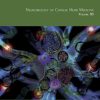


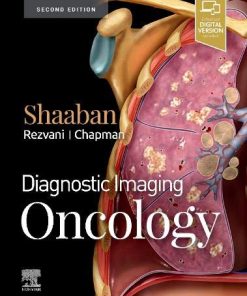

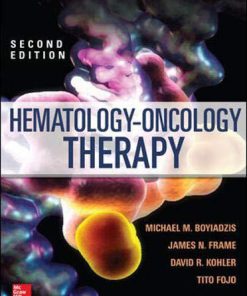
![Imaging for Clinical Oncology [Radiotherapy in Practice] 2nd Edition Peter Hoskin](https://ebookmass.com/wp-content/uploads/2024/04/imaging-for-clinical-oncology-radiotherapy-in-practice-37258916-247x296.jpg)
